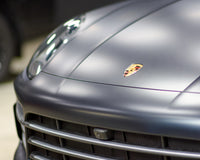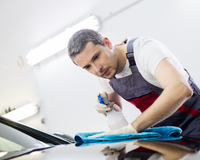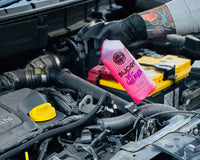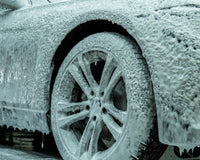A ceramic coating isn’t the most easy form of protection to apply generally. However, the added performance often makes it worth the extra effort. Preparing the surface as best as possible will get the best performance out of the coating.
Why prepare the surface
A wax contains oils, which often have little trouble being combined with the residue of other oils. If there is still a little bit of oily residue left from polishing, or a glaze, the wax will only slightly be affected by this. A sealant can be a little bit more tricky, but will still perform good. But a coating is a bit more tricky. In turn for this, you will get better performance than a sealant, and much better than that from wax. If you are in a hurry, a wax will be the quickest option, if you have the time and want to put in the effort, a coating might be the best option, particularly if you are looking for long term durability.
How to prepare the surface
In order to prepare the surface as best as possible, its recommended to keep these rules in mind:
- Remove all forms of oil. Just wiping off the polish residue is not enough.
- Use an IPA product (Like Synergy Prep) to remove any trace of residue for a perfectly clean surface
- Make sure the surface has been washed, decontaminated and preferably polished (to remove any surface oxidation or ingrained contamination)
- Tape off areas that are not supposed to be coated to make your job easier.
- A ceramic coating for paintwork might not perform well on unpainted plastic trims
- A coating designed for glass might not perform properly on paintwork, and vice versa
- As with all protective products, applying it as thin as possible makes it easier to work with
- Read the label or ask the manufacturer on advice on curing time. Letting these products cure to long before buffing might make it very difficult to work with
- Most ceramic coating products are designed to be used within 6-18 months from manufacturing. If you have a very old bottle, test it out before applying There might be cured bits in the cap from a used bottle, this is normal.
- The ceramic product hardens into a very hard, slightly glass like residue
The difference between paint, plastic and glass
Ceramic coatings are tricky to create. To get the best performance possible, the manufacturer has to focus the recipe on the surface it will be applied upon. The chemical bonding with glass is different that the bonding with plastic or paintwork. Please note that painted plastic count as paintwork, because the clear coat that is being applied on painted plastic is the same paint that is being applied on the metal body panels. Check wether the product you are using is designed to work with the surface you are applying it on.
Read the original article at: https://www.detailingwiki.org/protection/preparing-ceramic-coating/














